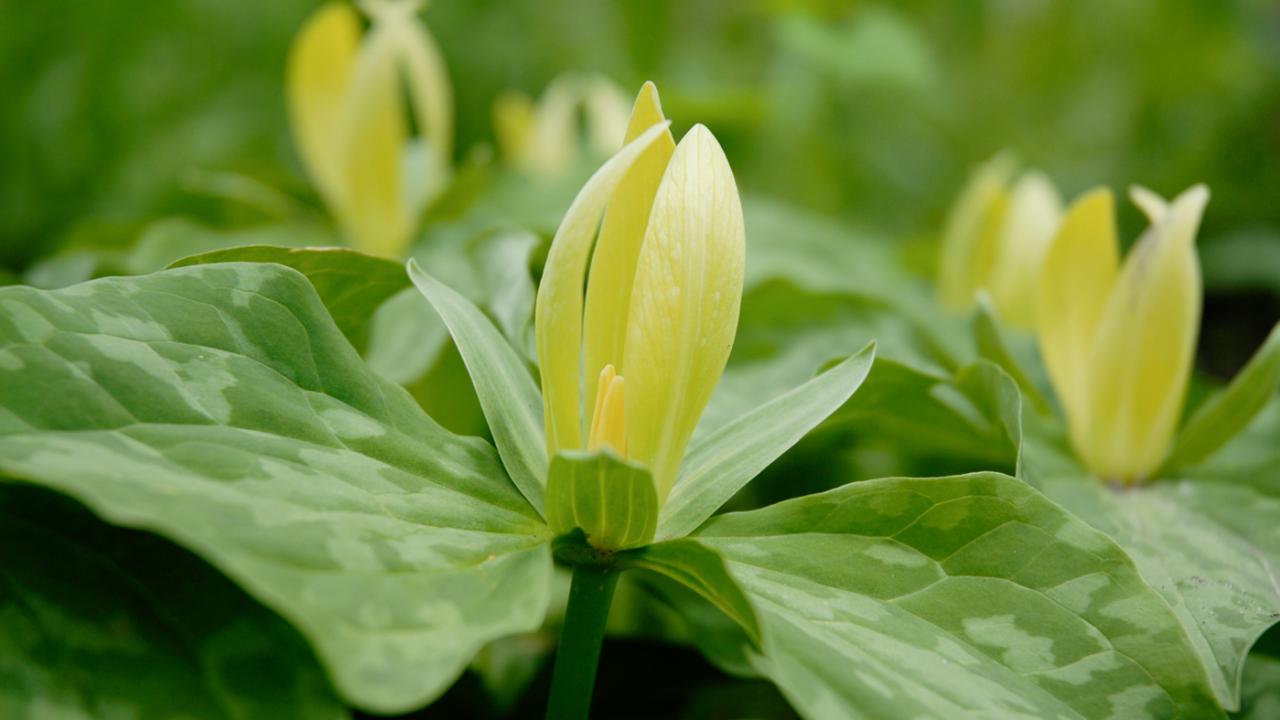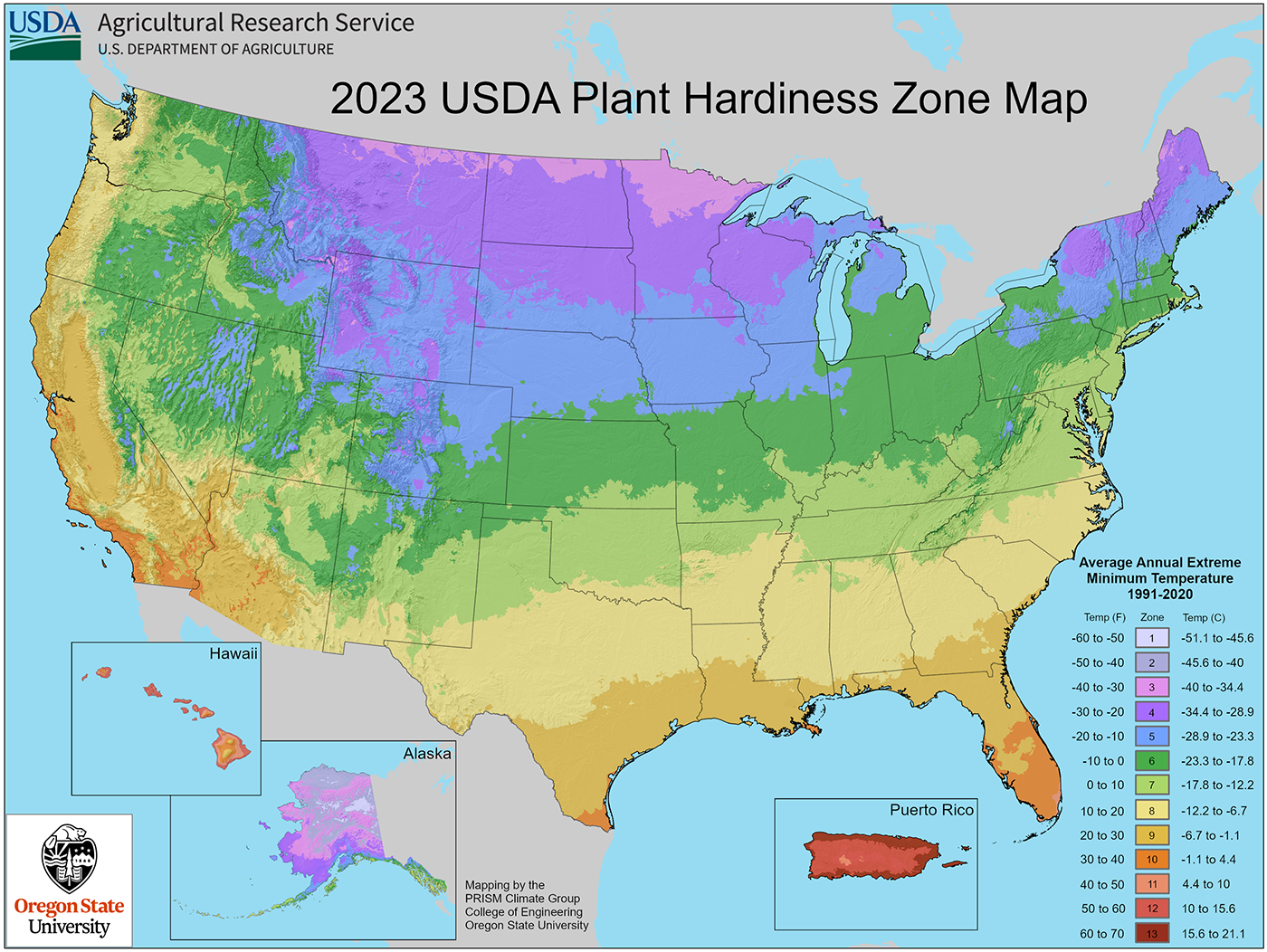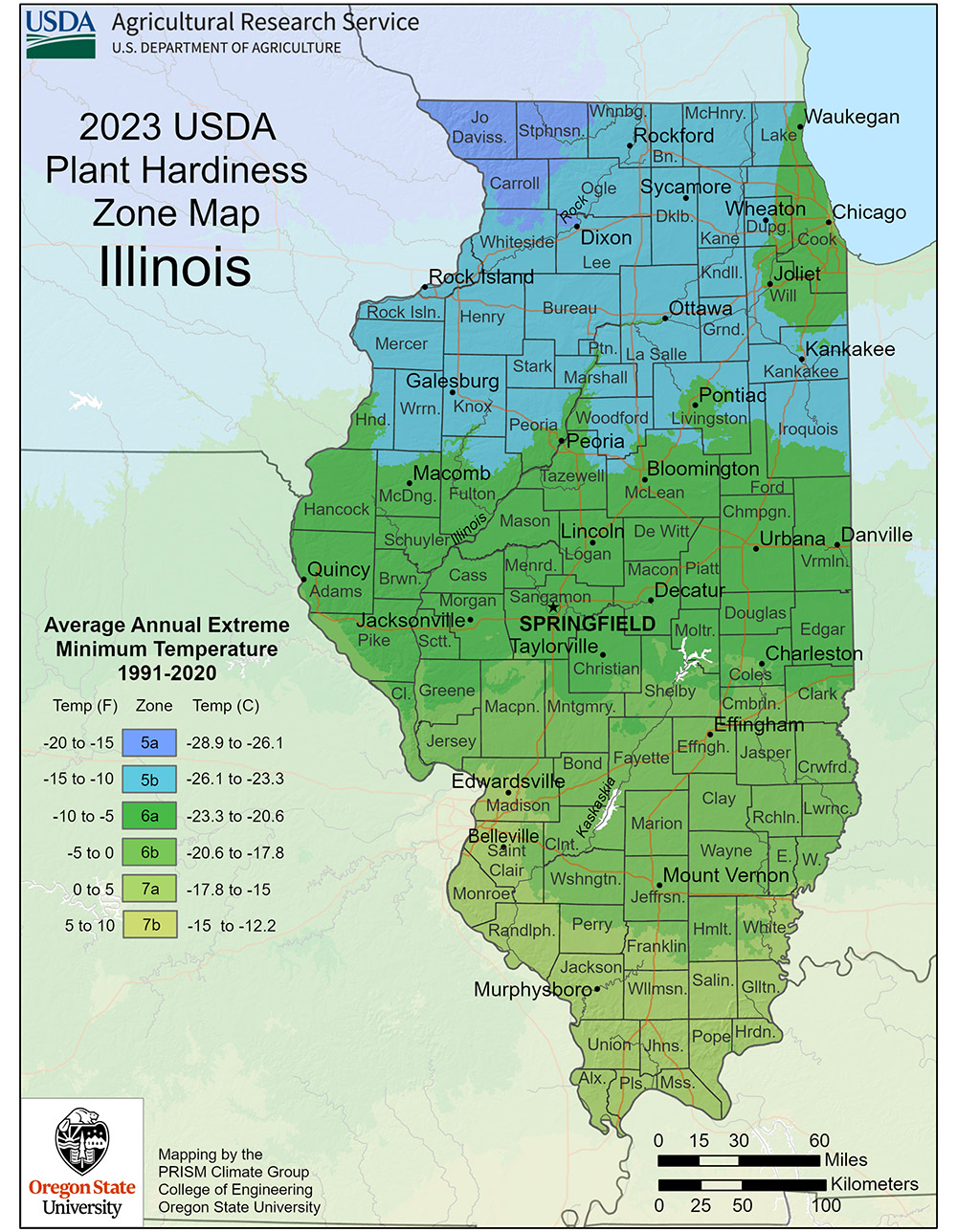

Ready to remake your Garden?
The new USDA Plant Hardiness Zone Map can help
Is this the year to try bigleaf hydrangea, tea olive, or another plant that you think only grows in a warmer place?
The U.S. Department of Agriculture (USDA) recently released a revised Plant Hardiness Zone Map, which can help you decide what plants might survive the winter. The update is the first since 2012.

“It’s a great tool, and we’re glad the USDA continues to update these guidelines based on new data,” said Fred Spicer, executive vice president and director of the Chicago Botanic Garden.
The latest version shows that about half of the country, including much of the state of Illinois, has shifted to a slightly warmer zone. Most of the Chicago area is now in zone 6a, including the Chicago Botanic Garden, which previously was in 5b. (Zone 1a is the coldest zone and 13b is the warmest). Much of northern Illinois remains in zone 5.
Despite the warming trend, as climate scientists have warned, we can still expect unstable winter weather and extreme conditions such as polar vortexes, Spicer pointed out.
With that caveat in mind, the hardiness update should encourage gardeners to try new plants that typically grow in warmer areas, Spicer said. Keep an eye out for new offerings at garden centers and in catalogs this spring, as retailers expand their offerings. “Ask yourself, how lucky do you feel? And be prepared for joy…and maybe disappointment.”
Spicer advised gardeners to use the map as a starting point, while weighing the needs of each individual plant. It’s one tool to consider, along with other variables, such as the quality and composition of your soil. “Our zone 6 is not the same as the zone 6 in parts of New Mexico or West Virginia,” he noted. Another good tool gardeners should use is the American Horticultural Society heat zone map, which accounts for summer heat and nighttime cooling.
What does the zone change mean for the Chicago Botanic Garden?
“Public gardens like us normally tend to push the envelope a bit, to stretch the zone,” Spicer said. For instance, the Garden is trialing dwarf crape myrtles, small versions of the tree that’s so popular in the southern U.S. The plants are dying back to the ground in winter, regrowing from the roots, and flowering, much like herbaceous perennials.
Hellebores, long-lived, shade-loving perennials, are another example of how the Garden tests suspected hardiness—and by doing so, hope to encourage home gardeners to do the same. Spicer said, “Twenty years ago, no one in our area–including the Garden–was planting a lot of hellebores. That has changed, and recent plantings are performing superbly.” So much so that they are another new trial, and in early spring, local garden shops will feature them.
But a zone change alone doesn’t alter the Garden’s planting strategy. “We really wish we could grow more broadleaf evergreens,” Spicer noted, “but for many of those, the issue is our high pH soils.”
The staff also keeps a map of the Garden’s microclimates, where plants hardy in zone 7 might thrive. “We’ll continue to experiment,” Spicer said, “because we want to introduce our visitors to new plants and inspire them with the Garden’s beauty, and all the plants that can contribute to it.”
What you need to know about the changes
What is the USDA Plant Hardiness Zone Map?
The map helps gardeners, growers, and others understand which perennials are most likely to thrive at a location in the United States and Puerto Rico.
It’s based on 30-year averages of the lowest annual winter temperatures at specific locations.
What do the different zones represent?
There are 13 hardiness zones, as well as half zones designated as “a” for cooler temperatures and “b” for warmer ones.
Find your zone
Find your hardiness zone by typing in your zip code here:
https://planthardiness.ars.usda.gov/
How is the map used?
Gardeners use it as a general guide, for instance, to decide which perennials to buy that might survive the winter. The map also may help you decide when to bring in tropical plants in containers that are growing outside, based on how sensitive they are to the cold.
Gardening catalogs often list hardiness zones in their plant descriptions.
What’s new with the 2023 version of the map?
The new map is more accurate and has greater detail than previous versions, including the last version in 2012. It also includes new features such as a “Tips for Growers” section.
What are other factors to consider, along with the hardiness zone?
The hardiness zone for a particular plant will not necessarily determine how hardy it will be in your garden or on your patio. Variables such as sun, shade, wind, humidity, rainfall, and plant genetics can affect how hardy the plant is and how well it performs. The plant must also tolerate year-round conditions such as summer heat in your area.
Other factors include microclimates in your area, such as a sheltered corner near a brick wall in a garden along Lake Michigan; a microclimate may allow gardeners to push the zone hardiness a bit.
What does the change mean for the Garden?
Will the new Plant Hardiness Zone Map change what we plant at the Garden? You might be surprised that the answer is no.
Here are just a few reasons why the zone change doesn’t change the planting strategy at our 385-acre campus in Glencoe.




